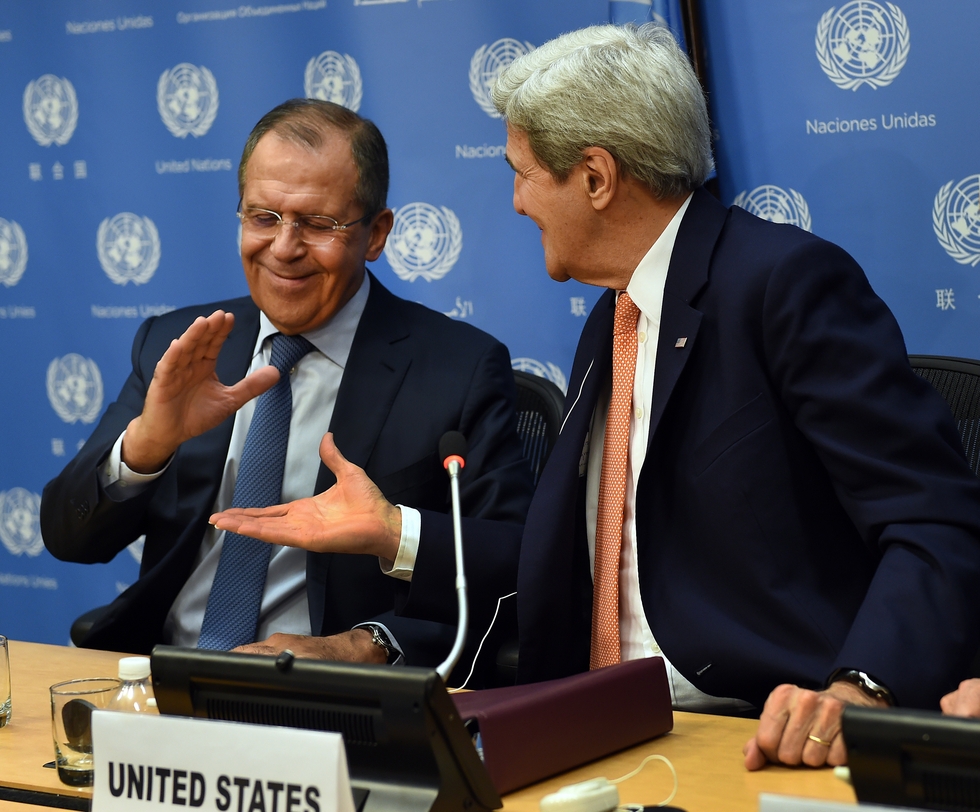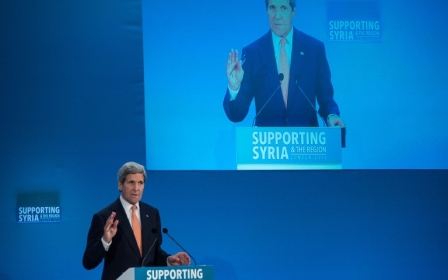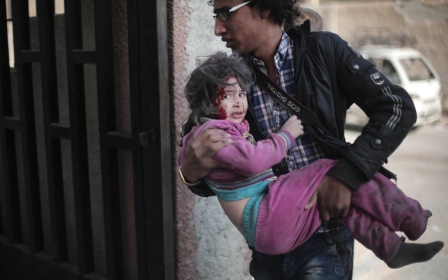US position on Syria tilts in favour of Russian intervention

The major developments on the Syrian battlefield in recent months have brought a corresponding shift in the Obama administration's Syrian policy.
Since the Russian military intervention in Syria upended the military balance created by the victories of the al-Qaeda affiliate al-Nusra Front and its allies last year, the Obama administration has quietly retreated from its former position that "Assad must go".
These political and military changes have obvious implications for the UN-sponsored Geneva peace negotiations. The Assad regime and its supporters are now well positioned to exploit the talks politically, while the armed opposition is likely to boycott them for the foreseeable future.
Supporters of the armed opposition are already expressing anger over what they regard as an Obama administration "betrayal" of the fight against Assad. But the Obama policy shift on Syria must be understood, like most of the administration’s Middle East policy decisions, as a response to external events that is mediated by domestic political considerations.
The initial Obama administration’s public stance on the Russian air campaign in Syria last October and early November suggested that the United States was merely waiting for Russia’s intervention to fail.
For weeks the political response to the Russian intervention revolved around the theme that the Russians were seeking to bolster their client regime in Syria and not to defeat ISIS, but that it would fail. The administration appeared bent on insisting that Russia give into the demand of the US and its allies for the departure of President Bashar al-Assad from power.
But the ISIS terror attacks in Paris focused the political attention of Europeans and Americans alike on the threat from ISIS terrorism and the need for cooperation with Russia to combat it. That strengthened the position of those within the Obama administration – especially the Joint Chiefs of Staff and the CIA - who had never been enamored of the US policy of regime change in the first place. In the aftermath of the Paris attacks, they pressed for a rethinking of the US insistence on Assad’s departure, as suggested publicly at the time by former acting CIA director Michael Morell.
The political impact of the Paris attacks has now been reinforced by the significant gains already made by the Syrian army and its allies with Russian air support in Latakia, Idlib and Hama provinces.
The bombing and ground offensives were focused on cutting the main lines of supply between the areas held by ISIS and the Nusra-led coalition and the Turkish border, which if successful would be a very serious blow to the armed opposition groups.
Dramatic successes came in late January, when Syrian government troops recaptured the town of Salma in Latakia province, held by al-Nusra Front since 2012, and the strategic al-Shaykh Maskin, lost to anti-Assad rebels in late 2014, thus regaining control of Daraa-Damascus highway. Even more significant, the Syrian army has cut off the lines of supply from Turkey to Aleppo, which is occupied by al-Nusra and allied forces.
By the time Secretary of State John Kerry met with the head of the Syrian opposition delegation, Riyad Hijab, on 23 January, it was clear to the Obama administration that the military position of the Assad regime was now much stronger, and that of the armed opposition was significantly weaker. In fact, the possibility of a decisive defeat exists for the first time in light of the Russian-Syrian strategy of cutting off the supply lines of the al-Nusra front.
What Kerry told Hijab, as conveyed to the website Middle East Briefing, reflected a new tack by the administration in light of that political-military reality. He made it clear that there would be no preconditions for the talks, and no formal commitment that they would achieve the departure of Assad at any point in the future. He was unclear whether the desired outcome of the talks was to be a "transitional government" or a "unity government" – the latter term implying that Assad was still in control.
The armed opposition and its supporters have been shocked by the shift in Obama's policy. But they shouldn’t be. The administration’s previous Syria policy had been based in large part on what appeared to be a favourable political opportunity in Syria. As described by Washington Post correspondent Liz Sly’s official US source, the policy was to put "sufficient pressure on Assad’s forces to persuade him to compromise but not so much that his government would precipitously collapse...."
The Obama administration had seen such an opportunity because a covert operation launched in 2013 to equip "moderate" armed groups with anti-tank missiles from Saudi stocks had strengthened the Nusra Front and its military allies. American Syria specialist Joshua Landis estimated last October that 60 to 80 percent of the missiles had ended up in the hands of the Nusra Front in Syria.
Those weapons were the decisive factor in the Nusra-led Army of Conquest takeover of Idlib province in April 2015 and the seizure of territory on the al-Ghab plain in Hama province, which is the main natural barrier between the Sunni-populated area inland and the Alawite stronghold of Latakia province on the sea. That breakthrough by al-Nusra and its allies, which threatened the stability of the Assad regime, was serious enough to provoke the Russian intervention in September.
But given the new military balance, the Obama administration now recognises that its former strategy is now irrelevant. It has been supplanted with a new strategy that is equally opportunistic. The idea now is to take advantage of shared US-Russian strategic interests regarding ISIS – and downgrade the objective of forcing a change in the Syrian regime.
A signal fact of the war against ISIS in Syria that has been ignored in big media coverage is that the United States and Russia have been supporting the same military forces in Syria against ISIS. The Kurdish Democratic Union Party (PYD) the leading party in Syrian Kurdistan, controls a large swath of land across northern Syria bordering Turkey. Its military force, the Peoples Defence Units (YPG), has been the most significant ground force fighting against ISIS.
But the YPG has also fought against al-Nusra Front and its allies, and has made no secret of its support for Russian air strikes against those forces. Moreover, the PYD has actively cooperated with the Syrian army and Hezbollah in northern Aleppo province. It is both the primary Syrian ally of the United States against ISIS but also a strategic key to the Russian-Syrian strategy for weakening al-Nusra and its allies.
US NATO ally Turkey has adamantly opposed the US assistance to the PYD, insisting it is a terrorist organisation. The United States has never agreed with that, however, and is determined to exploit the strategic position of PYD in the fight against ISIS. But that also implies a degree of US-Russian cooperation against the main armed opposition to the Assad regime as well.
The Obama administration is no longer counting on a military balance favourable to the armed opposition to Assad to provide a reason for concessions by the regime. Whether military success against the armed opposition will be decisive enough to translate into a resolution of the conflict remains to be seen. In the meantime, the Syria peace negotiations are likely to be at a standstill.
- Gareth Porter is an independent investigative journalist and winner of the 2012 Gellhorn Prize for journalism. He is the author of the newly published Manufactured Crisis: The Untold Story of the Iran Nuclear Scare.
The views expressed in this article belong to the author and do not necessarily reflect the editorial policy of Middle East Eye.
Photo: Russian Foreign Minister Sergey Lavrov (L) and US Secretary of State John Kerry shake hands after a news conference after a UN Security Council meeting on Syria at the United Nations in New York on 18 December, 2015 (AFP).
Middle East Eye propose une couverture et une analyse indépendantes et incomparables du Moyen-Orient, de l’Afrique du Nord et d’autres régions du monde. Pour en savoir plus sur la reprise de ce contenu et les frais qui s’appliquent, veuillez remplir ce formulaire [en anglais]. Pour en savoir plus sur MEE, cliquez ici [en anglais].





